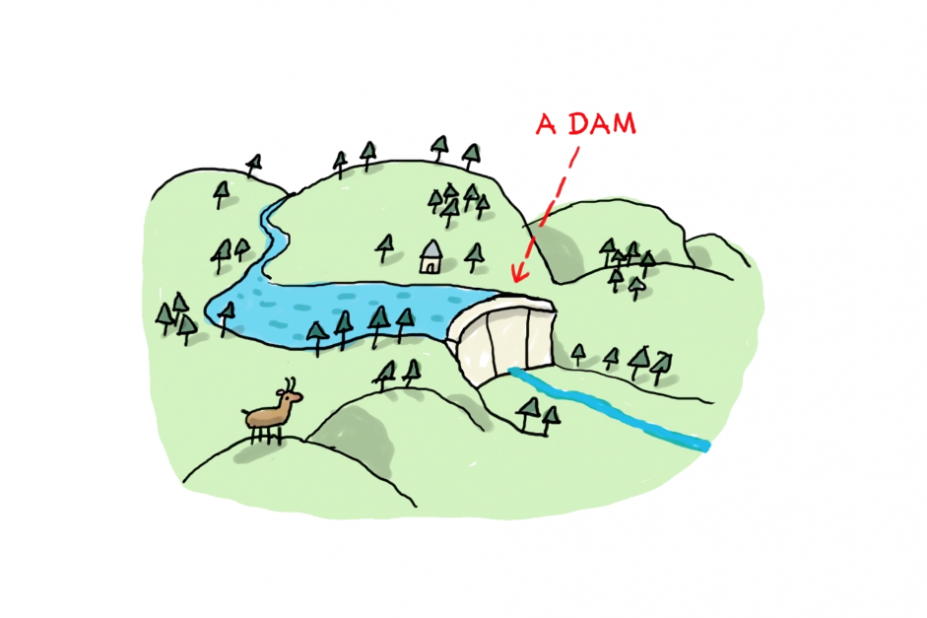A dam is a barrier constructed to hold back water in a river or lake…
… And control the amount of water that flows downstream.
So why do we build dams?
These constructions can be used to divert a river or stream to irrigate crops…
… Or to protect houses from the risk of floods when there is a sudden rise in water level because of heavy rain.
In this case, the dam holds back the excess water until the rain stops. Then the sluice gates are opened and the reservoir is slowly emptied.
Other dams hold back the water until a lake is formed.
This reservoir is used like a huge water tank that provides water in time of drought…
… Or to provide energy. Here, a hydroelectric power station that converts water power into electricity, is set up next to it.





 Retour
Retour